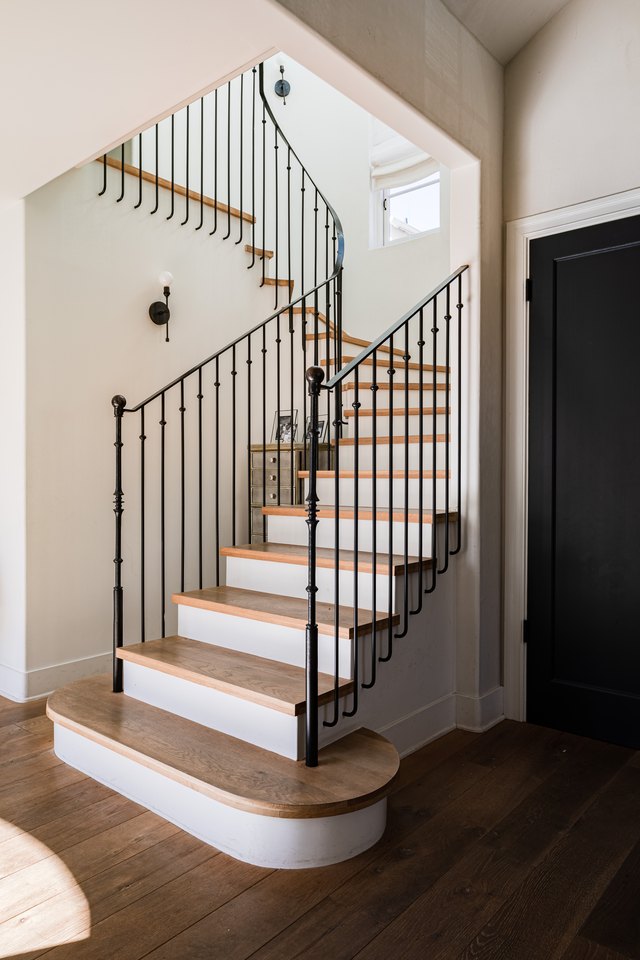
Using a package installment unit like exterior metal handrail kits helps with meeting safety regulations. Check with your local building authority before installing any type of handrail or balustrade. These regulations can vary slightly for different localities.
#STAIR RAILS CODE#
Handrails need to meet building code regulations just like any other structural element in a building. Are there regulations for handrail installations? Mopstick handrails are secured to the wall by means of brackets, which is a good choice for adding a more decorative handrail. From wall mounted handrails, glass and balustrade handrails, to newel posts, oak stair cladding. They sit closely against the wall, which is a nice option for narrow stairwells. Here we have a selection of stair parts in solid white oak. Pigs-ear handrails can be securely fastened to the wall without brackets. The two main types of handrails are pigs ear and mopstick. There are some types of wall-mounted handrails that you can use. This groove runs the entire length of the handrail. Glass-grooved handrails have a deep groove in which glass panels can easily be fitted. The size of the handrail remains the same, and it is the groove measurement that you would use for comparison to your spindles. The size of the spindle corresponds to the measurement of the groove. Grooved handrails have spindles that sit within the groove. These handrails are supported at both ends by means of a newel post. Un-grooved handrails are best used with glass panels or metal spindles or as a wall-mounted handrail. Integrated handrails come in two main types, which are available in either a grooved or an un-grooved style. Wall-mounted handrails are installed separately from the balustrade and stairs, and they can be used in place of a balustrade or alongside an existing one. They can be used with all types of spindles whether metal or some other material. Integrated handrails run along the top of the spindles and are part of the overall makeup of the balustrade. There are two basic types of stair handrails that are used with stairs and steps. You can choose pre-owned, used, and new stair handrails in almost any type and style that you can imagine, like metal handrails, and with the right matching décor, you can achieve the perfect look and provide additional safety as well. A wooden or metal stair handrail can provide not only safety and functionality, but it can also be used to provide an attractive accent to your stairwell. Stair handrails add security and stability when you are using an interior staircase or a metal handrail for outside steps. A handrail is not required for the bottom two steps of the staircase.Īt Howarth, we have a wide range of colours and designs available that will perfectly complete your staircase.įor further information and expert advice on stair handrails, please contact your friendly local Howarth branch.Add Elegance and Safety With Stair Handrails

However, if your stairs are more than one metre wide, a handrail will be required on both sides.

They are suitable for both indoors and outdoors.Īccording to the approved document K, if your staircase is less than one metre wide, then you will need to fit a handrail on one side. Wooden stair handrails are incredibly supportive and safe, and can be wall-mounted depending on where your staircase is placed. For wooden handrails, we recommend the pine or oak, which can be purchased to fit your choice of either 32mm or 41mm spindles. Stair handrails essentially offer support to the user and are particularly useful for young children and the elderly, as they are designed to be incredibly sturdy and robust.Īt Howarth, we offer a wide range of timber handrail options. Stair handrails form the top part of your banister as part of your internal stails and/or landing, and as the name suggests, is the part that yourself and your guests may hold on to whilst ascending or descending from the staircase.


 0 kommentar(er)
0 kommentar(er)
